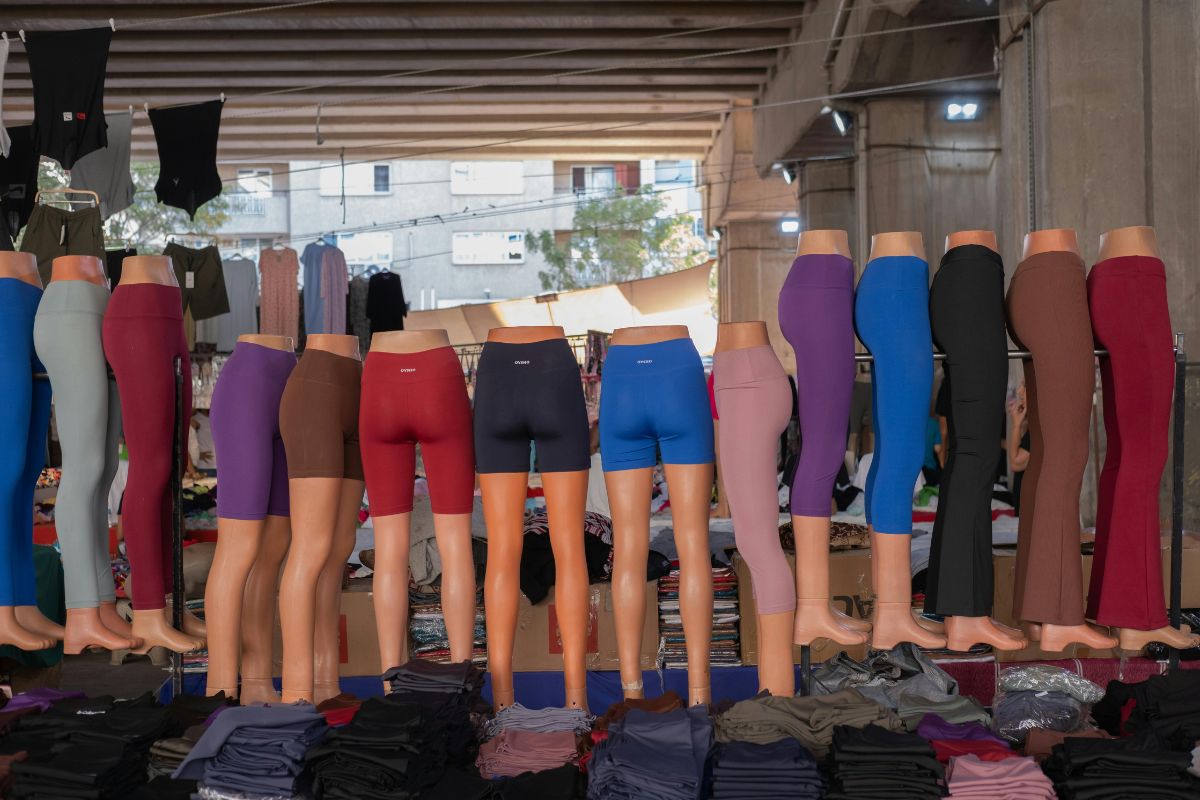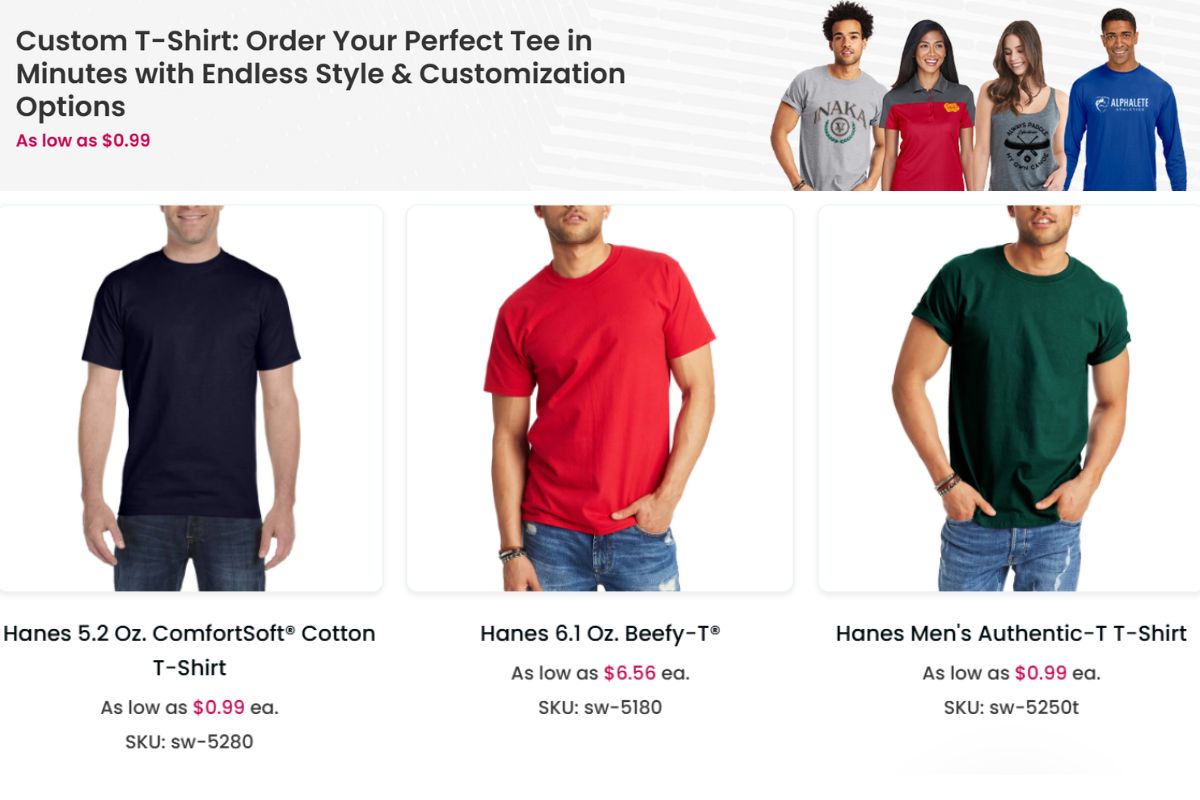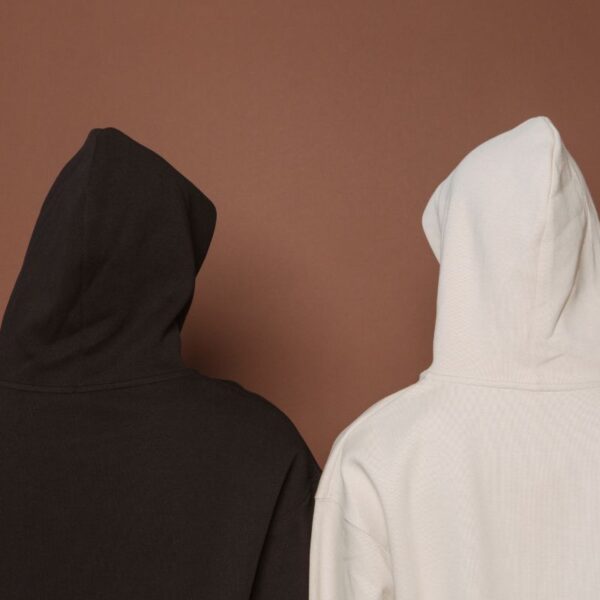Starting your own fitness clothing line can be an exciting venture.
To build a successful brand, you need to identify a gap in the market and create products that solve a problem for your potential customers.
From understanding your target audience to deciding on your brand name, each step plays a crucial role in setting up your business.
Optimizing Product Development for Your Fitness Clothing Line
- Establishing Your Brand
- Product Development
- Market Analysis and Strategy
- Online Presence and Sales
- Promotion and Outreach
- Managing Your Business
- Frequently Asked Questions
- What are the initial steps to establish a fitness clothing line for beginners?
- What strategies exist for starting a fitness clothing line with minimal investment?
- How can one create and sell their own line of gym wear from home?
- What should be considered when choosing a gym clothing manufacturer for a startup brand?
- What is the approximate financial requirement to launch a fitness apparel business?
- Can you discuss the profitability and market growth potential of a fitness clothing brand?
Research is key in this process. By exploring current trends and listening to customer feedback, you can design sportswear that not only looks good but also meets the needs of your audience.
This approach ensures that your clothing line stands out in a competitive market.
Once you have a solid plan, focus on building your brand identity. Your logo, brand message, and product selection should all reflect your vision.
Engaging with customers and developing a strong online presence will help you grow your brand and reach more people.
Establishing Your Brand
Creating a strong brand is vital for your fitness clothing line. You need to focus on how to register your business, develop a unique brand identity, and design an appealing activewear line. Each step will help you stand out in a competitive market.
Business Registration and Structure
Before you start selling, make sure to register your business. You can choose different structures, such as a sole proprietorship, limited liability company (LLC), or corporation.
Key Considerations:
- Sole Proprietorship: Simple and cost-effective but offers no personal liability protection.
- LLC: Provides personal liability protection and flexible tax options.
- Corporation: More complex structure, ideal for larger businesses.
Registering your business also means obtaining any necessary licenses and permits. Check local regulations to ensure compliance, as this step is crucial for building trust with your customers.
Conceptualizing Your Brand Identity
Next, define your brand identity. This includes your brand name, logo, and overall message. Your brand should reflect the values and lifestyle of your target audience.
Elements to Define:
- Target Audience: Identify who you want to reach. Are they fitness enthusiasts, casual gym-goers, or athletes?
- Brand Values: Think about what your brand stands for. Is it sustainability, comfort, or innovation?
- Visual Identity: Choose colors, fonts, and imagery that resonate with your audience.
Creating a strong brand identity will help you connect with your customers and build loyalty.
Designing Your Activewear Line
Designing your activewear line comes next. Focus on quality, functionality, and style. Your clothing needs to perform well while also looking good.
Key Points to Consider:
- Fabric Selection: Choose materials that are breathable and durable. Look for moisture-wicking options that enhance comfort during workouts.
- Styles and Cuts: Design a variety of pieces such as leggings, tops, and sports bras. Ensure your styles cater to different body types and preferences.
- Feedback Loop: Once you have initial designs, gather opinions from potential customers. This insight will help you refine your offerings.
Good design will set your line apart and attract more customers.
Product Development
Product development is a crucial stage when starting your fitness clothing line. It involves careful choices of materials, creating prototypes, and planning for manufacturing. Each step is essential for crafting high-quality activewear that stands out in the sportswear market.
Choosing the Right Fabric and Materials
Selecting the right fabric is vital for your fitness apparel. Look for materials that enhance performance and comfort. Common fabric choices include:
- Moisture-wicking fabrics to keep wearers dry.
- Stretchy materials like spandex for better movement.
- Breathable textiles such as polyester for ventilation.
Consider sustainability, too. Eco-friendly fabrics like organic cotton or recycled polyester appeal to many consumers.
Conduct tests to ensure that the fabric withstands wear and tear, especially for active use in gym apparel. Your material choice significantly impacts how joggers and other pieces perform and feel.
Creating Prototypes and Samples
Once you have your fabric, start creating prototypes. This is the time to refine your designs and focus on fit and functionality.
Use your line sheet to detail the following:
- Product types: Include items like leggings, tanks, and joggers.
- Colors and patterns: Choose appealing designs that resonate with your target audience.
Gather feedback from potential customers and experts. This helps you identify any issues before mass production.
It’s also wise to create samples to test durability and comfort during workouts. Adjust your design based on feedback to improve your final product.
Production and Manufacturing
After perfecting your prototypes, you’ll move to production. Choose a reliable manufacturer who understands the fitness apparel market. Consider options like:
- White-label manufacturers that allow for easy branding.
- Drop shipping to reduce upfront costs and inventory risk.
Discuss minimum order quantities and production timelines. Ensure the manufacturer uses quality control measures to maintain high standards.
Sustainable practices are also a valuable consideration, as many consumers prefer eco-friendly options in their athleisure choices.
Clear communication with your manufacturer sets the foundation for a successful launch of your fitness clothing line.
Market Analysis and Strategy
| Factor | Details | Key Considerations |
|---|---|---|
| Target Audience | Fitness enthusiasts, gym-goers, athletes, yoga practitioners, and casual wearers. | Define customer demographics (age, gender, income, lifestyle). |
| Market Demand | Growing interest in activewear due to health & fitness trends. | Analyze Google Trends, competitor sales, and market reports. |
| Competitive Analysis | Competitors include Gymshark, Nike, Lululemon, Adidas, and local brands. | Identify their pricing, materials, designs, and marketing strategies. |
| Unique Selling Proposition (USP) | High-performance fabric, sweat-wicking, eco-friendly materials, stylish yet functional. | Emphasize sustainability, customization, affordability, or premium quality. |
| Pricing Strategy | Options: Budget-friendly, mid-range, or premium pricing. | Consider production costs, competitor pricing, and perceived value. |
| Sales Channels | Direct-to-consumer (website), marketplaces (Amazon, Etsy), social media (Instagram, TikTok), retail partnerships. | Multi-channel presence increases sales and brand awareness. |
| Marketing Strategy | Influencer collaborations, social media ads, fitness sponsorships, referral programs. | Focus on Instagram, TikTok, YouTube for engagement and brand growth. |
| Branding & Positioning | Minimalist, luxury, or performance-driven branding. | Strong brand identity with unique logo, packaging, and messaging. |
| Supply Chain & Production | Manufacturing in China, India, or local production. | Balance cost-efficiency, quality control, and ethical sourcing. |
| Customer Engagement | Loyalty programs, personalized recommendations, UGC (user-generated content). | Increases repeat purchases and brand trust. |
| Expansion Plans | Scaling into global markets, launching new product lines (leggings, sports bras, accessories). | Research logistics, international demand, and brand growth potential. |
Market analysis and strategy are crucial when starting a fitness clothing line. Knowing the market gives you a solid foundation, while a focused strategy helps you connect with your audience.
Understanding the Fitness Clothing Market
Understanding your market begins with thorough research. Look at trends in the fitness clothing industry. Key players in this space include brands focusing on activewear and athleisure wear.
Consider the following factors:
- Market Size: The fitness clothing market is growing rapidly, driven by increasing health awareness.
- Trends: Athleisure, eco-friendly materials, and inclusive sizing are gaining traction.
- Consumer Preferences: Your audience desires comfort, style, and functionality when choosing activewear.
Take time to analyze competitors and their positions in the market. This insight will help you develop strategies that differentiate your brand.
Identifying Your Niche Market
Identifying your niche market is essential for standing out in a crowded space. Focus on a specific segment of the fitness clothing market that resonates with your vision.
Here are some popular niches:
- Yoga Apparel: Cater to a growing group of yoga enthusiasts.
- Plus-Size Activewear: Offer stylish and comfortable options for larger sizes.
- Sustainable Fashion: Target eco-conscious consumers with eco-friendly materials.
By honing in on a niche, you can refine your product offerings and marketing efforts. This focus allows for more effective branding and customer engagement, leading to better sales.
Developing a Marketing Strategy
A well-defined marketing strategy will help you reach your target audience. Start by identifying who your customers are based on age, gender, lifestyle, and interests.
Your strategy should include:
- Social Media: Use platforms like Instagram and TikTok to showcase your products.
- Influencer Partnerships: Collaborate with fitness influencers who align with your brand values. They can help expand your reach.
- Content Marketing: Create helpful blog posts or videos related to fitness, offering real value to potential customers.
Lastly, track your marketing efforts and analyze results. This approach ensures you can adjust strategies based on performance data and customer feedback.
Online Presence and Sales
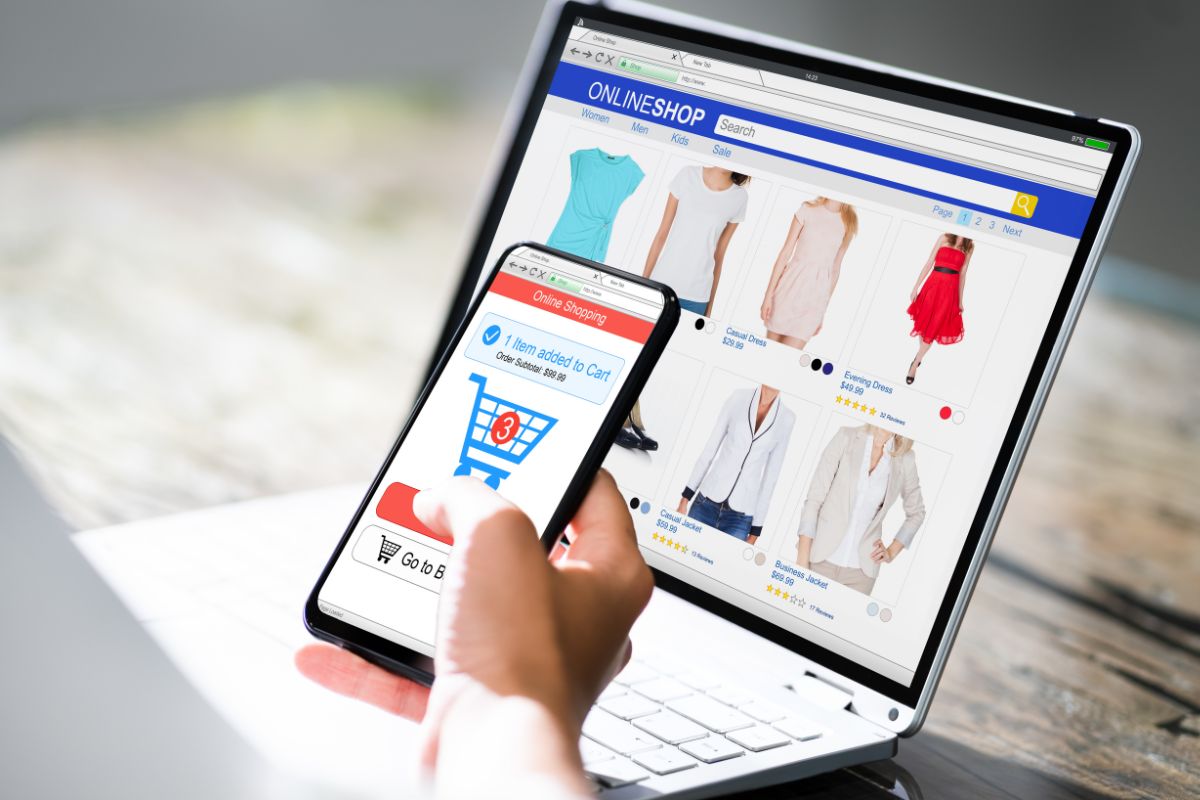
Creating a solid online presence is crucial for any fitness clothing line. A well-designed e-commerce website, mobile optimization, and print-on-demand services play key roles in reaching customers effectively.
Launching an E-Commerce Website
Your e-commerce website is the main sales platform for your fitness clothing line. Start by choosing a user-friendly platform like Shopify, WooCommerce, or BigCommerce. These platforms help you set up your store without needing advanced technical skills.
Key features to include:
- Clear Navigation: Make it easy for visitors to find products.
- High-Quality Images: Show your clothing from multiple angles.
- Compelling Descriptions: Clearly describe each item, including sizes and materials.
Be sure to implement a secure payment process. This builds trust and encourages purchases.
Optimizing for Mobile Users
Many shoppers browse and buy using mobile devices. It’s essential to have a mobile-friendly website. A responsive design automatically adjusts to fit different screen sizes.
Consider these points:
- Fast Loading Times: Optimize images and reduce file sizes to improve speed.
- Simple Checkout Process: Keep the steps minimal for an easier buying experience.
- Clear Calls to Action: Use buttons that stand out, like “Buy Now” or “Add to Cart.”
Testing on various devices ensures that your site works well for all users.
Using Print on Demand Services
Print-on-demand (POD) services allow you to offer a variety of products without large upfront costs. You can create items like t-shirts, leggings, and hats that are printed as orders come in.
Benefits of POD include:
- Low Risk: You don’t need to buy inventory upfront.
- Product Variety: Easily add or remove items based on trends.
- Easy Integration: Many POD services integrate with e-commerce platforms.
Choose a reliable POD service to ensure quality and quick shipping. This keeps customers satisfied and encourages repeat business.
Promotion and Outreach
| Strategy | Details | Pros | Cons | Best For |
|---|---|---|---|---|
| Social Media Marketing | Instagram, TikTok, Facebook, YouTube for fitness-related content. | High engagement, visual appeal, organic & paid reach. | Requires consistent content, competition is high. | Building brand awareness & community. |
| Influencer & Athlete Partnerships | Collaborate with fitness influencers, trainers, and athletes. | Increases credibility, reaches targeted audience quickly. | Costly for big influencers, ROI may vary. | Reaching new customers & boosting brand trust. |
| Paid Advertising | Facebook Ads, Google Ads, Instagram & TikTok promotions. | Scalable, targeted audience, instant traffic. | Requires ad budget, needs optimization. | Generating immediate sales & website traffic. |
| SEO & Content Marketing | Blog posts, workout guides, fitness tips, and keyword-optimized product pages. | Long-term traffic, builds authority, low cost. | Takes time to see results, requires SEO expertise. | Ranking on Google & driving organic sales. |
| Affiliate Marketing | Partner with bloggers, fitness coaches, and micro-influencers to promote your brand. | Performance-based, low upfront cost. | Requires tracking & managing affiliates. | Expanding audience & increasing conversions. |
| Email Marketing & SMS Campaigns | Collect emails from website visitors for promotions & exclusive offers. | High ROI, direct engagement with customers. | Can be spammy if overused, requires segmentation. | Customer retention & boosting repeat sales. |
| Limited-Time Discounts & Flash Sales | Offer discounts during launches, seasons, or holidays. | Creates urgency, increases conversions. | Can lower profit margins if overused. | Attracting first-time buyers & increasing sales. |
| Loyalty & Referral Programs | Reward customers for repeat purchases and referrals. | Encourages brand loyalty, increases CLV (Customer Lifetime Value). | Needs a tracking system, takes time to build. | Retaining existing customers & increasing word-of-mouth marketing. |
| Collaborations with Gyms & Fitness Studios | Offer exclusive discounts or custom apparel to gym members. | Targeted marketing, builds brand credibility. | May require revenue-sharing deals with gyms. | Locally-focused sales & brand partnerships. |
| Pop-Up Shops & Fitness Events | Sell products at marathons, fitness expos, and health fairs. | Direct customer interaction, instant sales & feedback. | Requires planning, staffing & upfront costs. | Creating brand presence & testing products in real life. |
To successfully promote your fitness clothing line, you need to connect with your target audience effectively. Building relationships through influencers, using social media, and fostering brand loyalty are key strategies. These methods can help you reach more customers and create a lasting impression.
Collaborating with Fitness Influencers
Partnering with fitness influencers can significantly boost your brand’s visibility. Choose influencers whose values align with your brand. When they wear and promote your clothing, their followers may become interested in your products.
You can send product samples for them to try and share their honest opinions. Consider offering affiliate programs where influencers earn a commission for sales they generate. This strategy makes them more invested in promoting your brand.
Your partnership should result in authentic content. Encourage influencers to share their workouts or styling tips while featuring your clothing. This way, potential customers see the products in action, not just on a mannequin.
Leveraging Social Media and Content Marketing
Social media is a powerful tool for reaching your audience. Focus on platforms like Instagram, TikTok, and Facebook where your market is most active. Create engaging posts that showcase your clothing line with high-quality images and videos.
Consider using paid advertisements to reach a larger audience. You can target specific demographics to ensure you engage potential customers effectively.
Share user-generated content, showcasing real customers in your gear to create a sense of community.
Blogging about fitness topics related to your brand also helps. You can provide value through workout tips, nutrition advice, or styling guides. This approach positions your brand as a resource and keeps people returning for more.
Building Brand Recognition and Loyalty
Creating a strong brand identity is essential for recognition. Develop a clear and memorable brand name, along with a unique logo or wordmark that resonates with your audience.
Consistency in your messaging and visuals across all platforms helps reinforce your brand.
Encourage customer loyalty through rewards programs. Offer discounts, exclusive access to new collections, or special events for repeat customers.
Engaging with your audience through personalized emails can also enhance their connection to your brand.
Feedback forms or surveys can provide insights into what your customers enjoy or want in the future. Listening to them not only improves your offerings but also builds trust and reliability, which are crucial for customer retention.
Managing Your Business
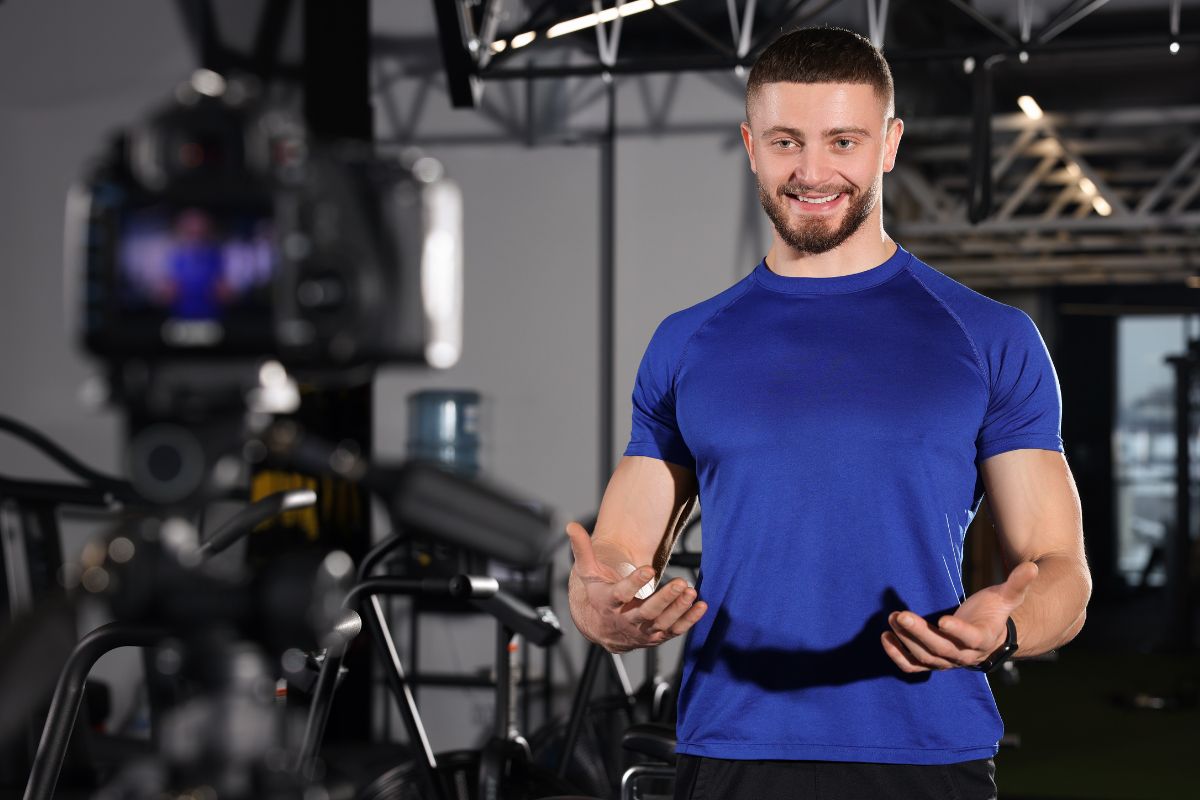
Successfully managing your fitness clothing line involves careful planning and execution.
You need to handle logistics, analyze sales growth, and secure funding. Each aspect plays a vital role in your brand’s success.
Handling Logistics and Customer Service
Logistics involves the movement of your products from production to your customers.
You must choose reliable suppliers for materials and production methods. Partnering with logistics companies can streamline shipping and delivery.
Creating a solid inventory management system helps you track your stock levels.
Keep your website user-friendly for easy navigation and checkout. This leads to better customer satisfaction.
Customer service is crucial. Responding quickly to inquiries and resolving issues builds trust.
Use tools like CRM software to manage customer relationships effectively. Ensure that your team is trained to uphold your brand values.
Analyzing Sales and Growth Opportunities
Regularly analyzing your sales data helps you understand what products perform best. Use tools like Google Analytics to track customer behavior on your website.
Look for patterns in your sales over time. Seasonal trends can guide your marketing efforts.
Consider surveys to gather feedback on customer preferences.
The competition is always evolving. Keep an eye on successful fitness brands. Analyze their marketing strategies and product offerings. This insight can lead to new ideas and improvements for your brand.
Securing Funding and Managing Finances
Create a detailed business plan to outline your financial needs. Include startup costs, production expenses, and marketing budgets. A clear plan will help when talking to potential investors.
Explore different funding options. These can include personal savings, loans, or investors. Crowdfunding platforms are also an option to consider.
Once your business is up and running, managing your finances is key.
Track your income and expenses diligently using accounting software. Regularly review your financial reports to make informed decisions. This can help you adjust your strategies for growth and sustainability.
Frequently Asked Questions
Starting a fitness clothing line involves several key steps and considerations. Here are answers to common questions that can guide you through the process.
What are the initial steps to establish a fitness clothing line for beginners?
First, research the fitness clothing market. Identify your target audience and find a unique niche.
Next, develop a business plan that outlines your brand, product offerings, and marketing strategies. This plan will help guide your decisions as you move forward.
What strategies exist for starting a fitness clothing line with minimal investment?
You can start by using print-on-demand services. This allows you to create designs without large upfront costs for inventory.
Use social media to market your brand and connect with potential customers. Collaborating with influencers can also help gain visibility without high expenses.
How can one create and sell their own line of gym wear from home?
Design your gym wear using graphic design software or hire a designer.
Use online platforms to set up an e-commerce store. You can handle order fulfillment yourself or partner with a fulfillment service to manage shipping and logistics.
What should be considered when choosing a gym clothing manufacturer for a startup brand?
Select a manufacturer that aligns with your quality standards and production needs. Research their experience in fitness apparel, and evaluate their communication efficiency.
Also, consider their production timelines and minimum order quantities to ensure they fit your budget.
What is the approximate financial requirement to launch a fitness apparel business?
Initial costs can vary greatly. You might need between $5,000 to $20,000 for basic inventory, design, and marketing.
It’s essential to budget for website development and any necessary licensing or legal fees to ensure you launch successfully.
Can you discuss the profitability and market growth potential of a fitness clothing brand?
The fitness apparel industry has shown consistent growth and can be quite profitable. With an increasing number of people prioritizing health and wellness, there is a growing market.
However, staying updated on trends and customer preferences is key to maintaining profitability in this competitive space.

